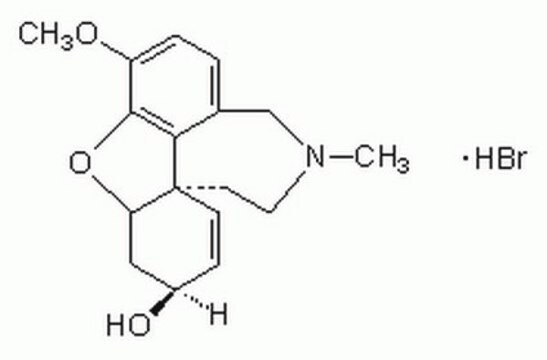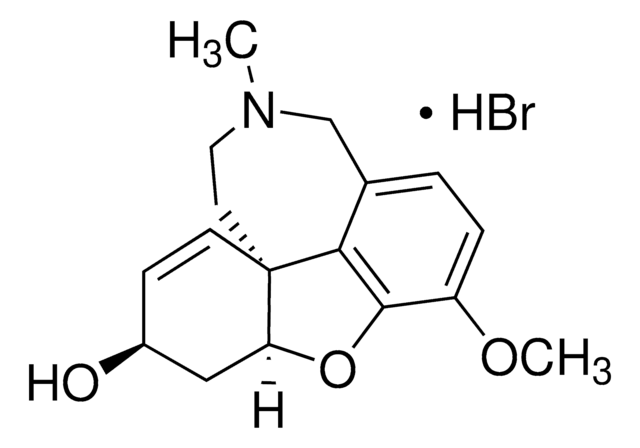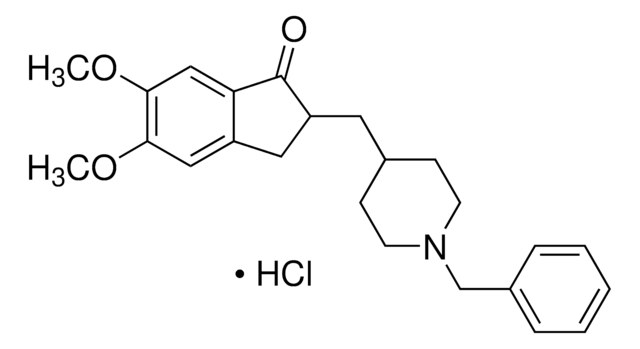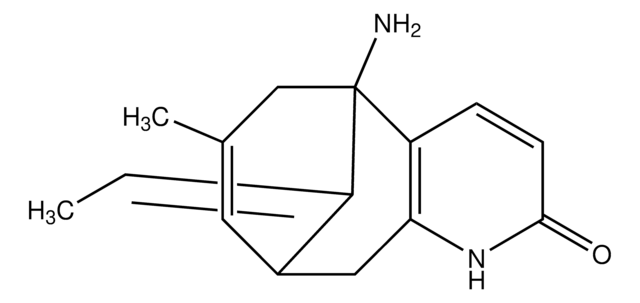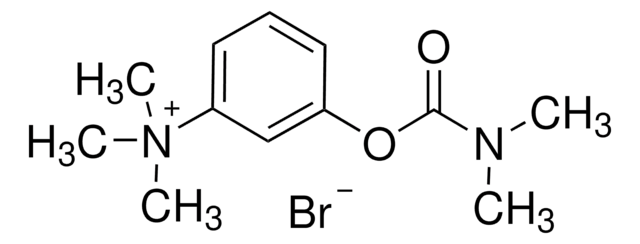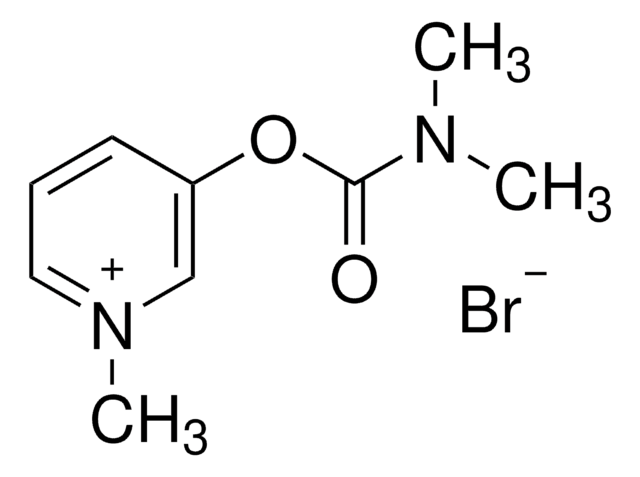G1660
Galanthamine hydrobromide from Lycoris sp.
≥94% (HPLC)
Synonym(s):
Galantamine hydrobromide
About This Item
Recommended Products
biological source
plant (Ungeria victoris)
Quality Level
Assay
≥94% (HPLC)
form
powder
mp
270 °C
solubility
DMSO: soluble 10 mg/mL, clear, colorless
water: soluble 20 mg/mL, clear, colorless
storage temp.
−20°C
SMILES string
Br[H].COc1ccc2CN(C)CC[C@@]34C=C[C@H](O)C[C@@H]3Oc1c24
InChI
1S/C17H21NO3.BrH/c1-18-8-7-17-6-5-12(19)9-14(17)21-16-13(20-2)4-3-11(10-18)15(16)17;/h3-6,12,14,19H,7-10H2,1-2H3;1H/t12-,14-,17-;/m0./s1
InChI key
QORVDGQLPPAFRS-XPSHAMGMSA-N
Gene Information
human ... ACHE(43)
Looking for similar products? Visit Product Comparison Guide
General description
Application
- as an AChE (acetylcholinesterase) inhibitor and positive control in acetylcholinesterase assay performed to determine the activity of AChE
- as a positive control in the screening of AChE inhibitors
- as a positive control in AChE inhibitory assay performed to determine the AChE-inhibitory activities of pyrithione and related sulfur-containing pyridine N-oxides
Biochem/physiol Actions
Packaging
Signal Word
Danger
Hazard Statements
Precautionary Statements
Hazard Classifications
Acute Tox. 3 Oral
Storage Class Code
6.1C - Combustible acute toxic Cat.3 / toxic compounds or compounds which causing chronic effects
WGK
WGK 3
Flash Point(F)
Not applicable
Flash Point(C)
Not applicable
Personal Protective Equipment
Choose from one of the most recent versions:
Already Own This Product?
Find documentation for the products that you have recently purchased in the Document Library.
Customers Also Viewed
Our team of scientists has experience in all areas of research including Life Science, Material Science, Chemical Synthesis, Chromatography, Analytical and many others.
Contact Technical Service
